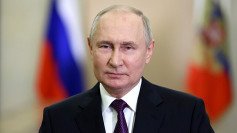The World Bank has increased its funding allocation for Covid-19 vaccine purchases and deployment from $12 billion to $20 billion. The international lender said the move to boost available funding is due to the increased demand for pandemic-related financing from developing countries.
The World Bank said it has already provided more than $4 billion in loans and grants to 51 developing countries. The funds were mainly used by governments and organizations to buy and distribute vaccines. The bank said it expects to release billions of dollars more to an additional 25 countries.
"Much more will follow in the coming weeks. We're at war with the vaccine. Covid's not going to go away quickly. It's going to be a long-term war," World Bank President David Malpass said.
Malpass said the bank has received 41 requests from African countries. He said the countries that had requested loans had not yet vaccinated even half of their populace and it is unlikely that they would be able to hit international targets.
The World Bank, the World Health Organization and the International Monetary Fund recently urged Group of 20 countries to vaccinate at least 40% of the people by the end of 2021 and 60% by early 2022. The groups also asked the G-20 countries to share more of their vaccine stockpile with developing countries and to eliminate barriers in the supply chain.
Malpass reiterated the group's call and asked that more developed countries donate their surplus doses. He also called on governments and pharmaceutical companies to be more open to sharing vaccine manufacturing and distribution technologies to poorer nations.
Apart from loans for vaccine purchases, the World Bank said it has been seeing an increase in demand for nonhealth-related expenditure. The bank's managing director for operations, Axel van Trotsenburg, said the World Bank's International Bank for Reconstruction and Development and the International Development Association already made lending commitments worth nearly $100 billion. Trotsenburg said he expects the demand to increase well into 2022.






